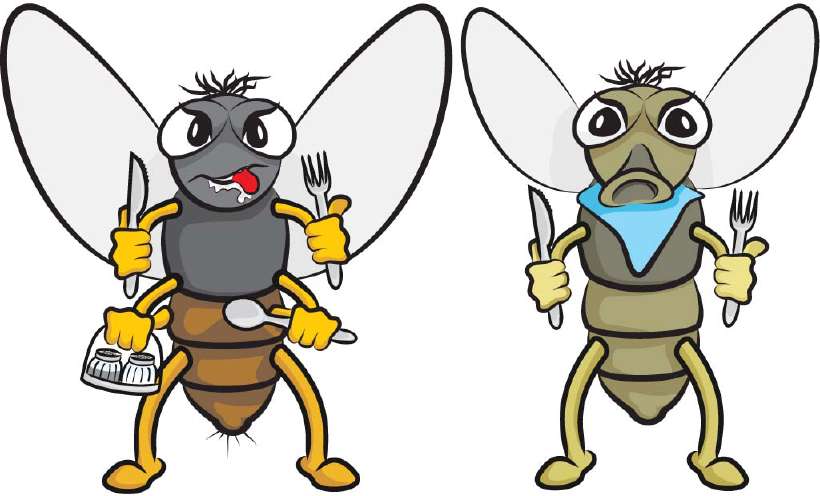How do Houseflies Spread Diseases?
Home / Science for Kids / 5Ws & H For Kids / How do Houseflies Spread Diseases?
The housefly (musca domestica) is one of the most common of all insects. It is a major health hazard, particularly in parts of the world where sanitary conditions are poor.
The housefly has a dull gray, bristled body that is about 7 mm in length. It has large reddish compound eyes. Its mouth cannot bite but consists of a spongy pad.
It has a peculiar system of feeding itself. At first it releases saliva and digestive juices over food and then sponges up the resulting solution. One can well imagine what we are eating after a fly are taken a ‘sip’ of our food.
![How do Houseflies Spread Diseases? [Illustration by Sudheer Nath]](/media/5wh-45_1_hu741d40d79a9b3c52310644f336efabd4_9408_820x0_resize_q60_box.jpg)
Because of the way they eat, flies contaminate large amounts of food. They carry germs of several deadly diseases and cause millions of deaths every year.
Another way that the housefly contaminates food is by rubbing its legs together. Do you know why it does so?
The whole body of the housefly, including claws and padded feet, is covered with bristles. Its tongue is coated with sticky glue. A fly rubs its legs together to clean itself. In the process of rubbing its legs, it rubs off scraps of some of the material that has gathered on its bristles.

This is how it drops germs of dangerous diseases on our food. When we eat this food we may get infected. Some of the most common diseases spread by the housefly are typhoid, tuberculosis and dysentery, all of which, if left untreated even for a short while, can cause death.
Flies gather such germs from garbage and sewage, where they usually live and breed. The female lays about 100 eggs at a time and as many as 1000 during her lifetime. The eggs hatch into larvae in 12 to 30 hours.
Within a few days, the pupae become adults and the cycle begins again. Most houseflies have a lifespan of about 30 days during summer and longer when the weather is cooler. Cold weather usually kills off the adults, but larvae and pupae are able to survive the winter.
356 words |
3 minutes
Readability:
Grade 6 (11-12 year old children)
Based on Flesch–Kincaid readability scores
Filed under: 5ws and h
Tags: #larvae, #diseases, #weather, #germs
You may also be interested in these:
Mr Fly Rubs his Hands with Glee
What is Asthma?
Orissa Police's Feathered Force is Dying
The Baby Current Which Destroys
They Make you Swallow a Fish for a Herbal Cure